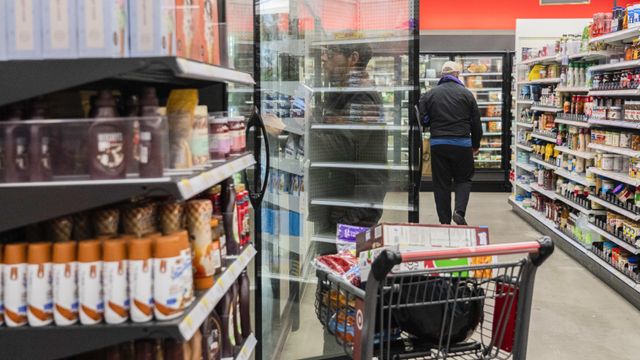Stubborn inflation raises doubts Fed will cut rates this year
A closely watched measure of inflation remained stronger than expected in March, worrying news for Federal Reserve officials who have become increasingly concerned that their progress on lowering prices increases might be stalling.
The surprisingly stubborn inflation reading could raise doubts about when the Fed will be able to start cutting interest rates, and about how much they will be able to reduce borrowing costs this year.
The consumer price index climbed 3.8% on an annual basis after stripping out food and fuel prices, which economists do in order to get a better sense of the underlying inflation trend. That “core index” was stronger than the 3.7% increase economists expected, and unchanged from 3.8% in February. The monthly reading was also stronger than what economists had forecast.
Counting food and fuel, the inflation measure climbed 3.5% in March from a year earlier, up from 3.2% in February and faster than what economists have anticipated. A rise in gas prices contributed to that inflation number.
This week’s inflation figures come at a critical juncture for the Fed. Central bankers have been hoping to confirm that warmer-than-expected inflation figures at the start of the year were just a seasonal quirk, not evidence that inflation is getting stuck well above the 2% inflation target. Wednesday’s report offers little comfort that the quick early 2024 readings have not lasted.
While the Fed officially targets personal consumption expenditures inflation, a separate measure, the consumer price index, comes out earlier and includes data that feeds into the other metric. That makes it a closely watched signal of how price pressures are shaping up.
Policymakers have made it clear they want to see further evidence that inflation is cooling before they cut interest rates. Fed officials raised borrowing costs to 5.3% in 2022 and mid-2023, which they think is high enough to meaningfully weigh on the economy. Central bankers forecast in March that they will cut interest rates three times this year.
But Fed officials do not want to cut rates before they are confident inflation is on track to return to normal. Lowering borrowing costs too early or too much would risk allowing price increases to pick back up. And if households and businesses come to expect inflation to remain slightly higher, officials worry that could make it even harder to stamp out down the road.
That threat of lingering inflation has become a more serious concern for policymakers since the start of the year. Inflation flatlined in January and February after months of steady declines, raising some alarm at the Fed and among forecasters. Going into the year, investors expected the Fed to cut rates sharply in 2024 — to about 4% — but have dialed back those expectations. Investors now expect just two or three rate cuts.
Stocks futures dropped sharply following the inflation release as investors pared back their expectations for lower rates.
The inflation report’s details offered little reason to dismiss the continued stubbornness in price increases as a fluke. They showed that housing inflation remains firm, auto insurance continues to pick up and apparel prices climbed.
In a development that is likely to be especially notable for Fed officials, a measure of services inflation contributed to the pickup in annual inflation. Policymakers watch those prices closely, because they can reflect the strength of the underlying economy and because they tend to persist over time.
This article originally appeared in The New York Times.














